Discover 18 hidden attractions, cool sights, and unusual things to do in Cambodia. Don't miss out on these must-see attractions: Angkor Wat (Siem Reap), Ta Prohm (Siem Reap) or Bayon (Siem Reap).
Below, you can find the list of the most amazing places you should visit in Cambodia.
Table of Contents
Angkor Wat, Siem Reap
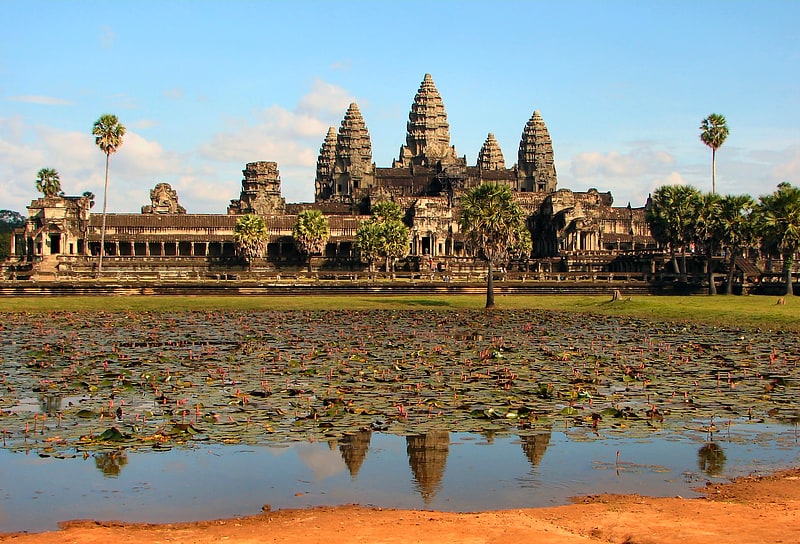
Also known as: ប្រាសាទអង្គរវត្ត
Temple in Siem Reap, Cambodia. Angkor Wat was built as a Hindu temple dedicated to Lord Vishnu, but later was turned into a Buddhist temple by the end of 12th century and is still a Buddhist temple in northwest Cambodia. A national symbol and sacred site of Cambodian Buddhism, the complex is a UNESCO World Heritage Site and a significant tourist destination.
Angkor Wat is the largest religious complex in the world by land area, measuring 162.6 hectares (401+3⁄4 acres) or more than three times the area of the Vatican City. It is also the largest Buddhist temples in the world. At the centre of the temple stands a quincunx of four towers surrounding a central spire that rises to a height of 65 m (213 ft). The temple has three rectangular galleries, each raised above the next. It lies within an outer wall 3.6 kilometres (2+1⁄4 miles) long and a moat more than five kilometres (three miles) long.
The temple was built in the early 12th century at the behest of Suryavarman II of the Khmer Empire, within the imperial capital Yaśodharapura (យសោធរបុរៈ, present-day Angkor). It served as the state temple for the empire. Originally dedicated to the Hindu god Vishnu, it was converted to a Buddhist temple towards the end of the 12th century.
Angkor Wat combines two basic plans of Khmer temple architecture: the temple-mountain and the later galleried temple. It is designed to represent Mount Meru, home of the devas in Hindu and Buddhist cosmology. Unlike most Angkorian temples, Angkor Wat is oriented to the west. Scholars are divided as to the significance of this. The temple is admired for the grandeur and harmony of its architecture, extensive bas-reliefs, and the statues of Buddhas and Devas that adorn its walls.
As the best-preserved temple at the site, Angkor Wat is the only one to have remained a significant religious centre since its foundation. The temple is at the top of the high classical style of Khmer architecture. It is one of the most important pilgrimage sites for Buddhists in Cambodia and around the world, having played a major role in converting Cambodia into a Buddhist nation. It has become a symbol of Cambodia, appearing on its national flag, and is the country's main tourist attraction.[1]
Address: #011 Sivutha Road, 17000 Siem Reap
Ta Prohm, Siem Reap
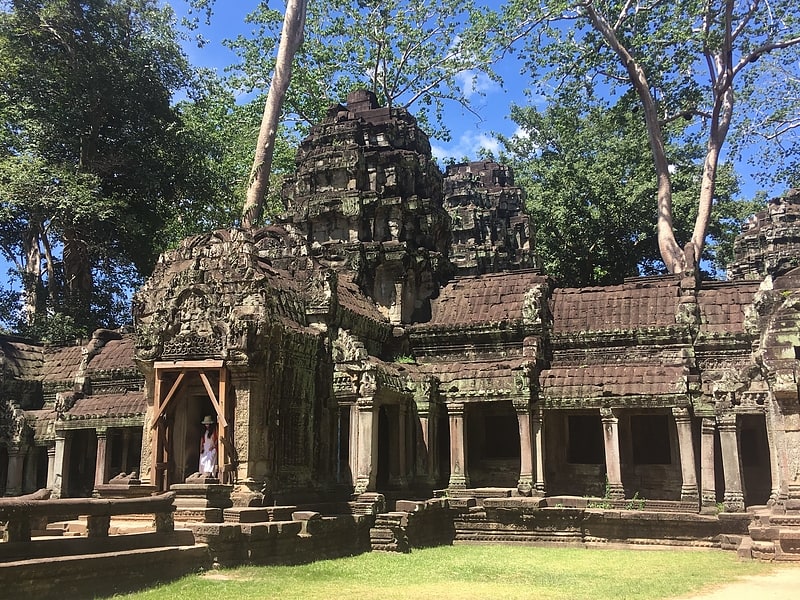
Also known as: ប្រាសាទតាព្រហ្ម
Temple ruins overgrown with trees. Ta Prohm is the modern name of the temple in Siem Reap, Cambodia, built in the Bayon style largely in the late 12th and early 13th centuries and originally called Rajavihara. Located approximately one kilometre east of Angkor Thom and on the southern edge of the East Baray, it was founded by the Khmer King Jayavarman VII as a Mahayana Buddhist monastery and university. Unlike most Angkorian temples, Ta Prohm is in much the same condition in which it was found: the photogenic and atmospheric combination of trees growing out of the ruins and the jungle surroundings have made it one of Angkor's most popular temples with visitors. UNESCO inscribed Ta Prohm on the World Heritage List in 1992. Today, it is one of the most visited complexes in Cambodia’s Angkor region. The conservation and restoration of Ta Prohm is a partnership project of the Archaeological Survey of India and the APSARA.[2]
Address: Petit Circuit Rd., Siem Reap
Bayon, Siem Reap
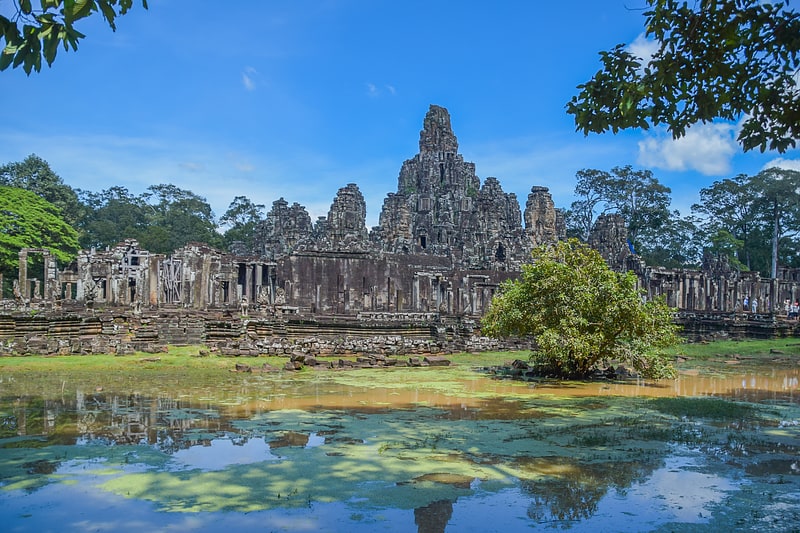
Also known as: ប្រាសាទបាយ័ន
Angkor Thom temple with smiling faces. The Bayon is a richly decorated Khmer Buddhist temple at Angkor in Cambodia. Built in the late 12th or early 13th century as the state temple of the Mahayana Buddhist King Jayavarman VII, the Bayon stands at the centre of Jayavarman's capital, Angkor Thom.
The Bayon's most distinctive feature is the multitude of serene and smiling stone faces on the many towers which jut out from the upper terrace and cluster around its central peak. These faces have been associated with the Hindu God Brahma because of the four faces looking in different directions but archaeologists also associate it with Buddha despite the jewelry, crown marking which are not associated with Buddha. The temple has two sets of bas-reliefs, which present a combination of mythological, historical, and mundane scenes. The main conservatory body, the Japanese Government Team for the Safeguarding of Angkor (the JSA) has described the temple as "the most striking expression of the baroque style" of Khmer architecture, as contrasted with the classical style of Angkor Wat (Khmer: ប្រាសាទអង្គរវត្ត).[3]
Address: Angkor Thom, Siem Reap
Royal Palace, Phnom Penh
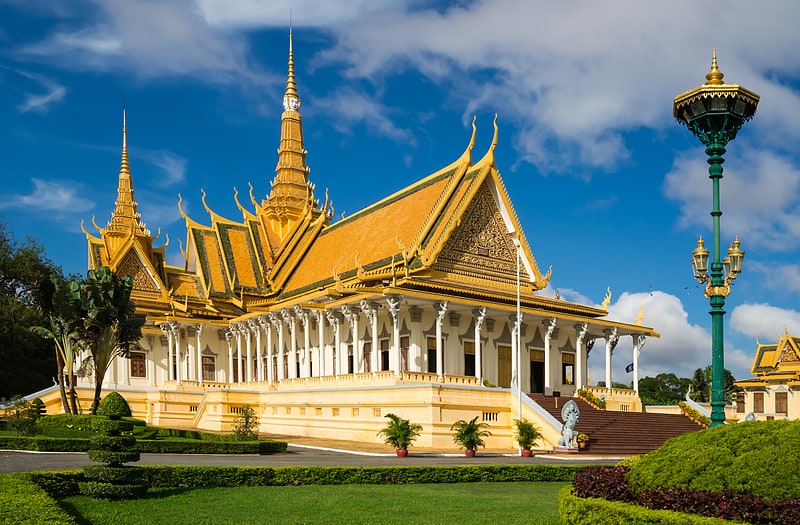
Also known as: ព្រះបរមរាជវាំង
Landmark palace complex built in 1866. The Royal Palace of Cambodia is a complex of buildings which serves as the royal residence of the King of Cambodia. Its full name in Khmer is the Preah Barom Reacheaveang Chaktomuk Serey Mongkol.The Cambodian monarchs have occupied it since it was built in the 1860s, with a period of absence when the country came into turmoil during and after the reign of the Khmer Rouge.
The palace was constructed between 1866 and 1870, after King Norodom relocated the royal capital from Oudong to Phnom Penh. It was built atop an old citadel called Banteay Keo. It faces approximately East and is situated at the Western bank of the cross division of the Tonle Sap River and the Mekong River called Chaktomuk (an allusion to Brahma).[4]
Address: Samdach Sothearos Blvd (3), Phnom Penh
Banteay Kdei, Angkor Archaeological Park

Also known as: ប្រាសាទបន្ទាយក្តី
Historic Buddhist temple with a moat. Banteay Kdei, meaning "A Citadel of Chambers", also known as "Citadel of Monks' cells", is a Buddhist temple in Angkor, Cambodia. It is located southeast of Ta Prohm and east of Angkor Thom. Built in the mid-12th to early 13th centuries AD during the reign of Jayavarman VII, it is in the Bayon architectural style, similar in plan to Ta Prohm and Preah Khan, but less complex and smaller. Its structures are contained within two successive enclosure walls, and consist of two concentric galleries from which emerge towers, preceded to the east by a cloister.
This Buddhist monastic complex is currently dilapidated due to faulty construction and poor quality of sandstone used in its buildings, and is now undergoing renovation. Banteay Kdei had been occupied by monks at various intervals over the centuries until the 1960s.[5]
Address: Srah Srang, Angkor Archaeological Park
Silver Pagoda, Phnom Penh
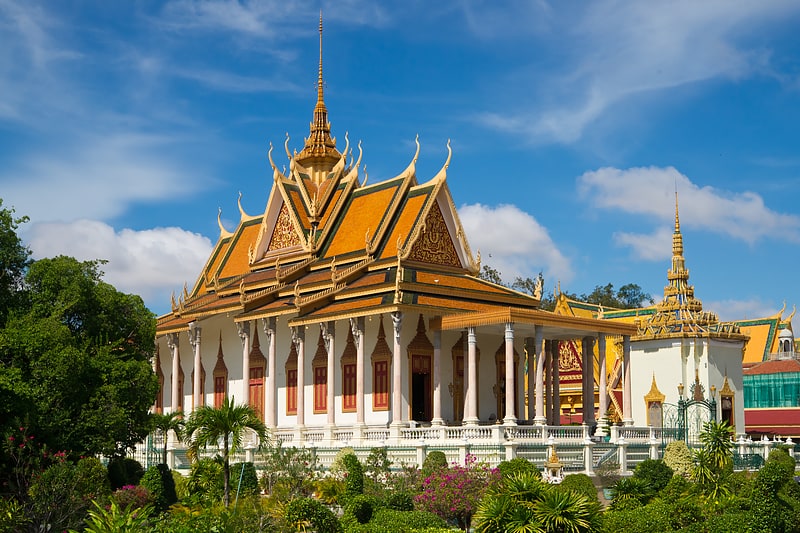
Also known as: វត្តព្រះកែវមរកត
Royal Palace temple with jeweled Buddhas. The Silver Pagoda is located on the south side of the Royal Palace in Chey Chumneas, Phnom Penh. The official name is Wat Ubaosoth Ratanaram, also known as Wat Preah Keo Morakot which is commonly shortened to Wat Preah Keo in Khmer.
The vihara houses many national treasures including many golds and jeweled Buddha statues. The most significant are a small green crystal Buddha (the "Emerald Buddha" of Cambodia — some sources maintain it was made of Baccarat Crystal in the 17th century but that's not possible since Baccarat Crystal didn't exist until the 18th century, and other sources indicate it was made in the 19th century by Lalique, a glass designer who lived in the 19th-20th century), and a life-sized gold Maitreya Buddha commissioned by King Sisowath, weighing 90 kg and dressed in royal regalia and set with 9584 diamonds, the largest of which weighing 25 carats, created in the palace workshops during 1906 and 1907. After the Cambodian Civil War the gold Maitreya Buddha lost most of its two-thousand diamonds. During King Norodom Sihanouk's pre-Khmer Rouge reign, the Silver Pagoda was inlaid with more than 5,329 silver tiles and some of its outer facades was remodeled with Italian marble. However, only a small area of these tiles are available to be viewed by the public on entering the pagoda.
The wall that surrounds the structures is covered with murals of the Reamker painted in 1903-1904 by Cambodian artists directed by the architect of the Silver Pagoda Oknha Tep Nimit Mak. The legend of Preah Ko Preah Keo is also represented by two statues.
It is a notable wat (Buddhist temple) in Phnom Penh; Its grounds being used for various national and royal ceremonies. The cremated remains of Norodom Sihanouk are interred in the stupa of Kantha Bopha located on the temple's compound.[6]
Address: Royal Palace Grounds, Phnom Penh
Wat Phnom, Phnom Penh

Also known as: វត្តភ្នំ
Historic hilltop Buddhist temple complex. Wat Phnom is a Buddhist temple, a pagoda, that symbolizes the name of Phnom Penh, a historical site in the record of Khmer national identity. Wat Phnom has a total height of 46 meters. The pagoda is named after Lady Penh from the story of the discovery of the five statues: one Vishnu statue and four Buddha statues.[7]
Address: National Highway 5 and Preah Sotheavong, 12101 Phnum Pénh
Phimeanakas, Angkor Archaeological Park
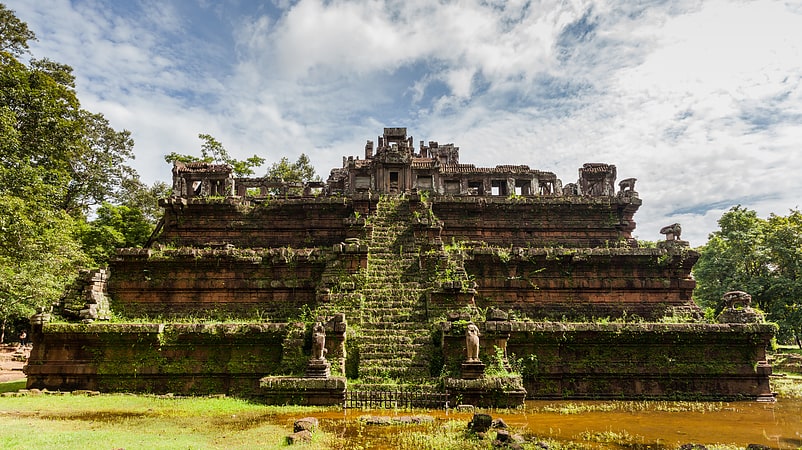
Also known as: ប្រាសាទភិមានអាកាស
Remains of a 10th-century Hindu temple. Phimeanakas or Vimeanakas at Angkor, Cambodia, is a Hindu temple in the Khleang style, built at the end of the 10th century, during the reign of Rajendravarman, then completed by Suryavarman I in the shape of a three tier pyramid as a Hindu temple. On top of the pyramid there was a tower, while on the edge of top platform there are galleries. Phimeanakas is located inside the walled enclosure of the Royal Palace of Angkor Thom north of Baphuon.[8]
Address: Angkor Wat, Angkor Archaeological Park
Ta Keo, Angkor Archaeological Park

Also known as: ប្រាសាទតាកែវ
Historic Hindu temple with pyramid shape. Ta Keo is a temple-mountain in Angkor, possibly the first to be built entirely of sandstone by Khmers.[9]
Kbal Chhay Waterfall, Sihanoukville province

Kbal Chhay Waterfall is a waterfall approximately 7 km from the city of Sihanoukville in south-west Cambodia and then a further 9 km along a red dust track.
Until 1963 Kbal Chhay was a source for providing clean-water to Sihanoukville, but the arrangement ended when it became a hiding place for the Khmer Rouge.
In 1998 Kbal Chhay was developed by the Kok An Company who in constructing a road in the area developed the site for local and international tourists. Today the Royal Government of Cambodia has regained control of the site and once again uses it as a clean water source for the nearby city.[10]
Address: Kbal Chhay Waterfalls, Cambodia, 18000 Sihanoukville province
Sihanoukville, Sihanoukville province
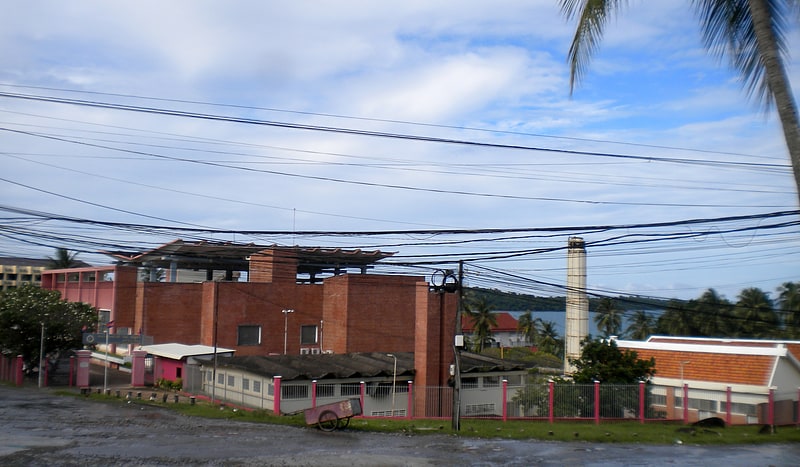
City in Cambodia. Sihanoukville, also known as Kampong Som is a coastal city in Cambodia and the capital of Preah Sihanouk Province, at the tip of an elevated peninsula in the country's south-west on the Gulf of Thailand. The city is flanked by an almost uninterrupted string of beaches along its entire coastline and coastal marshlands bordering the Ream National Park in the east. The city has one navigable river, the mangrove lined Ou Trojak Jet running from Otres Pagoda to the sea at Otres. A number of thinly inhabited islands – under Sihanoukville's administration – are near the city, where in recent years moderate development has helped to attract a sizable portion of Asia's individual travelers, students, and backpackers.
The city, which was named in honour of former king Norodom Sihanouk, had a population of around 89,800 people and approximately 66,700 in its urban center in 2008. Sihanoukville city encompasses the greater part of six communes (Sangkats) of Sihanoukville Province. A relatively young city, it has evolved in parallel with the construction of the Sihanoukville Autonomous Port, which commenced in June 1955, as the country's gateway to direct and unrestricted international sea trade. The only deep water port in Cambodia includes an oil terminal and a transport logistics facility. As a consequence, the city grew to become a leading national center of trade, commerce, transport, and process manufacturing.
Sihanoukville's many beaches and nearby islands make it Cambodia's premier seaside resort with steadily rising numbers of national visitors and international tourists since the late-20th century.
As a result of its economic diversity, the region's natural environment, and the recreational potential, an increasing number of seasonal and permanent foreign residents make Sihanoukville one of the most culturally varied and dynamic population centers in Cambodia. As of 2014 tourism remains insignificant in comparison with neighboring Thailand. Sihanoukville's future will largely be defined by the authorities' ability to successfully manage natural resources on the one hand and the necessities of urban and insular development, increasing visitor numbers, expanding infrastructure, the industrial sector and population growth, on the other.
Despite being the country's premier sea side destination, after decades of war and upheaval the town and its infrastructure remain very much disjointed and architecturally unimpressive. Infrastructure problems persist, in particular related to water and power supply, while international standard health facilities remain limited.
Sihanoukville also faces challenges related to crime, security, and safety with the city frequently being the focus of scandals linked to serious organized crime, petty crime, and corruption.
In recent years, Sihanoukville has seen unprecedented levels of Chinese investment into the city with numerous casinos having opened up throughout the city. Demographically, the city's ethnic make up has changed with thousands of mainland Chinese workers, developers and investors settling in the city much to the dismay of locals. As of 2019 nearly 80,000 Chinese live in Sihanoukville, accounting for 90% of the city's expat population. Mandarin signage is increasingly replacing Khmer and English signage in the city and crime in the form of drunken violence and organized crime are increasing. Sihanoukville is one of the major cities on China's One Belt One Road Initiative.[11]
Psar Nat Market, Battambang
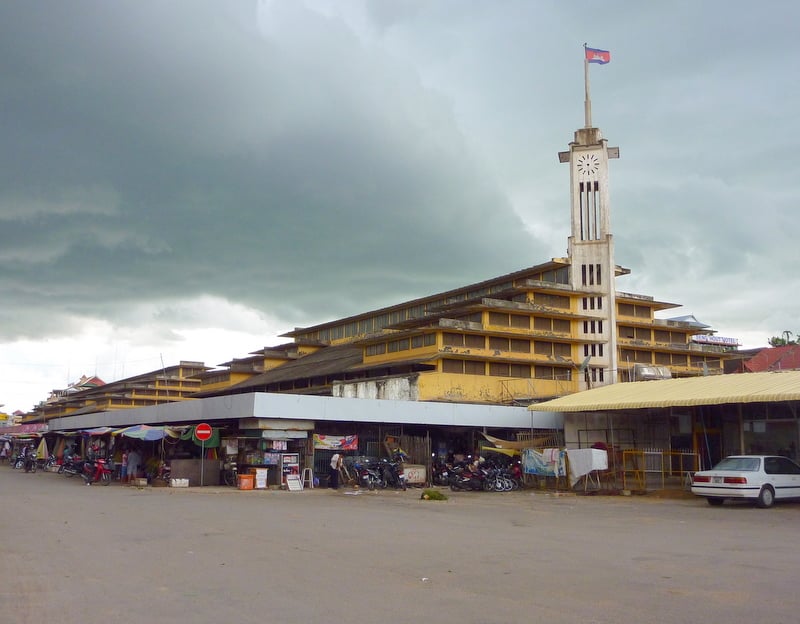
Shopping, Market
Battambang Museum, Battambang
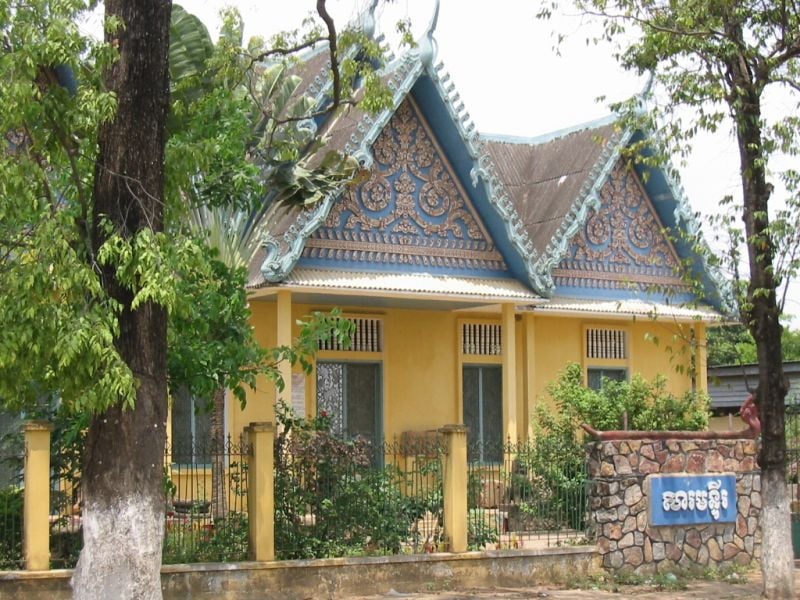
Museum
Otres camp, Sihanoukville province

Beach
Yuwan Square, Battambang

Park, Relax in park
Address: #224, St. 213, Phum Romchek 4, Sangkat Rottanak, Battambang
Kizuna Bridge, Kampong Cham
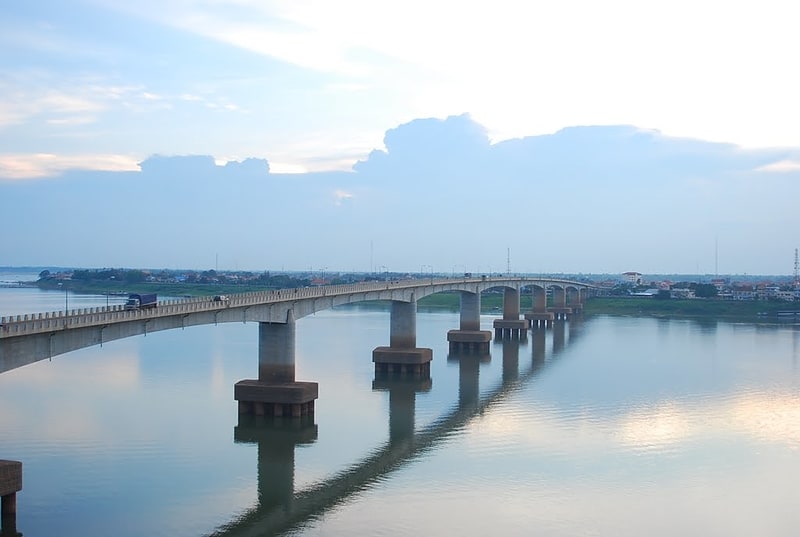
Also known as: ស្ពានគីហ្សូណា
Bridge in Kampong Cham, Cambodia. The Kizuna Bridge is a bridge on the Mekong River in the city of Kampong Cham, Kampong Cham Province.
It was opened in 2001 and was the first bridge to be built over the Mekong river in Cambodia.[12]
Banteay Prey Nokor, Kampong Cham
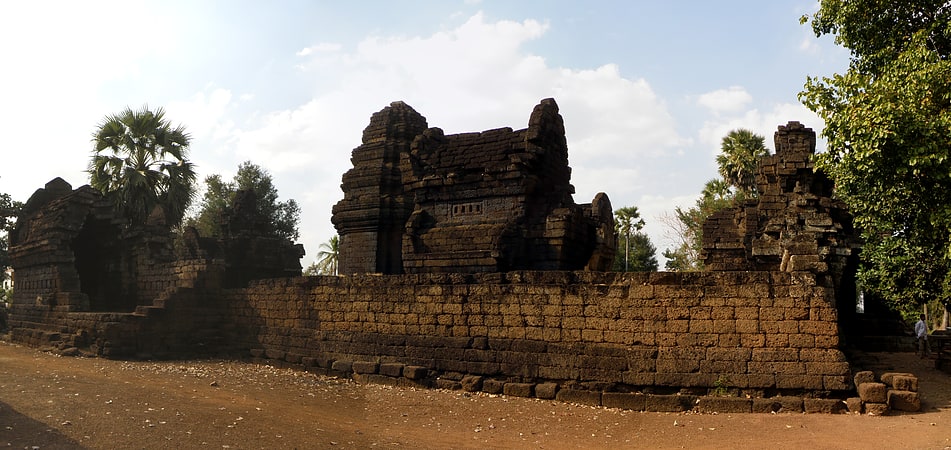
Banteay Prei Nokor is an ancient temple complex in the northwest of Kompong Cham, Cambodia.
The complex is especially known by the temple of Wat Nokor in Khum of Kompong Siem, 1200 meters from the town of Kompong Cham. The local people sometimes call it 'Wat Angkor' though a sign at the entrance now officially designates the name of the temple as Wat Nokor Bachey.[13]
Wat Nokor, Kampong Cham
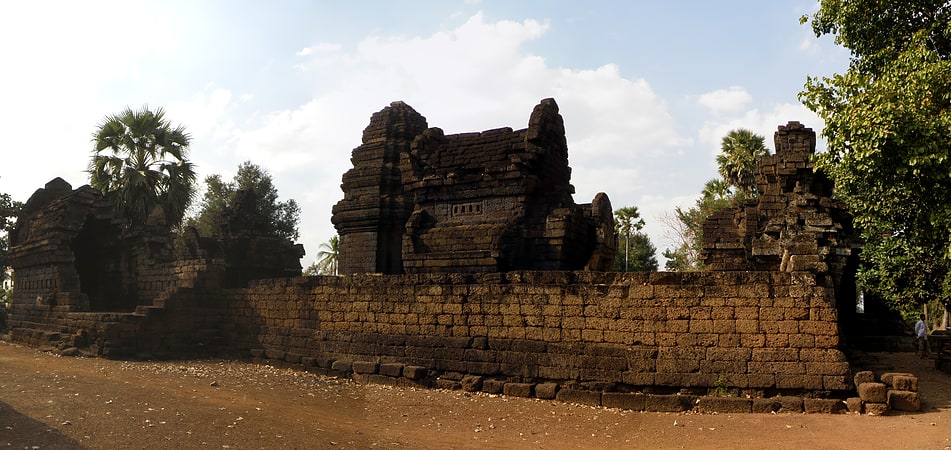
Banteay Prei Nokor is an ancient temple complex in the northwest of Kompong Cham, Cambodia.
The complex is especially known by the temple of Wat Nokor in Khum of Kompong Siem, 1200 meters from the town of Kompong Cham. The local people sometimes call it 'Wat Angkor' though a sign at the entrance now officially designates the name of the temple as Wat Nokor Bachey.[14]